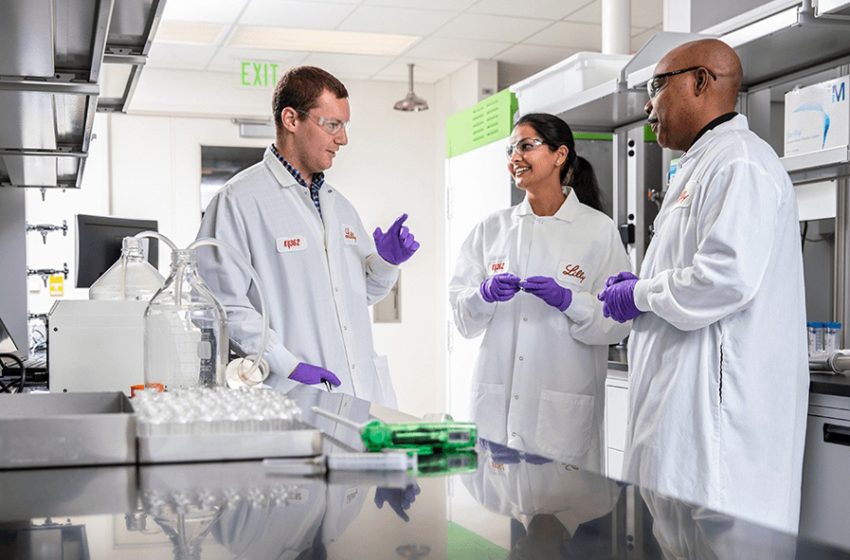Lilly’s oral GLP-1, orforglipron, delivers weight loss of up to an average of 27.3 lbs in first of two pivotal Phase 3 trials in adults with obesity

In ATTAIN-1, the investigational once-daily oral pill showed significant efficacy, and a safety and tolerability profile consistent with injectable GLP-1 therapies at 72 weeks.
Orforglipron achieved the primary and all key secondary endpoints, including demonstrating improvements in a number of cardiovascular risk factors.
With these results, Lilly is on track to submit orforglipron to global regulatory agencies by year-end and is making substantial investments to meet anticipated demand at launch..
Abu Dhabi, United Arab Emirates Aug. 18, 2025
Eli Lilly and Company (NYSE: LLY) today announced positive topline results from the Phase 3 ATTAIN-1 trial, evaluating orforglipron, an investigational oral glucagon-like peptide-1 (GLP-1) receptor agonist, in 3,127 adults with obesity, or overweight with a weight-related medical problem and without diabetes. At 72 weeks, all three doses of orforglipron, met the primary endpoint and all key secondary endpoints compared to placebo, delivering clinically meaningful weight loss as an adjunct to a healthy diet and physical activity. For the primary endpoint, orforglipron 36 mg, taken once per day without food and water restrictions, lowered weight by an average of 12.4% (27.3 lbs) compared to 0.9% (2.2 lbs) with placebo using the efficacy estimand.1
“Obesity is one of the most pressing global health challenges of our time, driving global chronic disease burden and impacting more than one billion people worldwide,” said Kenneth Custer, Ph.D., executive vice president and president of Lilly Cardiometabolic Health. “With orforglipron, we’re working to transform obesity care by introducing a potential once-daily oral therapy that could support early intervention and long-term disease management, while offering a convenient alternative to injectable treatments. With these positive data in hand, we are now planning to submit orforglipron for regulatory review by year-end and are prepared for a global launch to address this urgent public health need.”
In the ATTAIN-1 trial, orforglipron met the primary endpoint of superior body weight reduction compared to placebo. Participants taking the highest dose of orforglipron lost an average of 27.3 lbs (12.4%) at 72 weeks using the efficacy estimand. In a key secondary endpoint, 59.6% of participants taking the highest dose of orforglipron lost at least 10% of their body weight, while 39.6% lost at least 15% of their body weight. In addition to achieving significant weight loss, orforglipron was also associated with reductions in known markers of cardiovascular risk, including non-HDL cholesterol, triglycerides and systolic blood pressure in pooled analyses across all doses. In a pre-specified exploratory analysis, the highest dose of orforglipron reduced high-sensitivity C-reactive protein (hsCRP) levels by 47.7%.
For the treatment-regimen estimand,2 each dose of orforglipron led to statistically significant improvements across the primary and all key secondary endpoints.
Percent weight reduction: -7.5% (-7.8 kg; 17.2 lbs; 6 mg), -8.4% (-8.6 kg; 19.0 lbs; 12 mg), -11.2% (-11.3 kg; 25.0 lbs; 36 mg), -2.1% (-2.4 kg; 5.3 lbs; placebo)
Percentage of participants achieving body weight reductions of ≥10%: 33.3% (6 mg), 40.0% (12 mg), 54.6% (36 mg), 12.9% (placebo)
Percentage of participants achieving body weight reductions of ≥15%: 15.1% (6 mg), 20.3% (12 mg), 36.0% (36 mg), 5.9% (placebo)
The overall safety profile of orforglipron in ATTAIN-1 was consistent with the established GLP-1 receptor agonist class. The most commonly reported adverse events were gastrointestinal-related and generally mild-to-moderate in severity. The most common adverse events for participants treated with orforglipron (6 mg, 12 mg and 36 mg, respectively) were nausea (28.9%, 35.9% and 33.7%) vs. 10.4% with placebo, constipation (21.7%, 29.8% and 25.4%) vs. 9.3% with placebo, diarrhea (21.0%, 22.8% and 23.1%) vs. 9.6% with placebo, vomiting (13.0%, 21.4% and 24.0%) vs. 3.5% with placebo, and dyspepsia (13.0%, 16.2% and 14.1%) vs. 5.0% with placebo. Treatment discontinuation rates due to adverse events were 5.1% (6 mg), 7.7% (12 mg) and 10.3% (36 mg) for orforglipron vs. 2.6% with placebo. The overall treatment discontinuation rates were 21.9% (6 mg), 22.5% (12 mg) and 24.4% (36 mg) for orforglipron vs. 29.9% with placebo. No hepatic safety signal was observed.
The detailed ATTAIN-1 results will be presented next month at the European Association for the Study of Diabetes (EASD) Annual Meeting 2025 and published in a peer-reviewed journal. More results from the ATTAIN Phase 3 clinical trial program will be shared later this year, along with findings from the ACHIEVE Phase 3 clinical trial program evaluating orforglipron for adults with type 2 diabetes.








